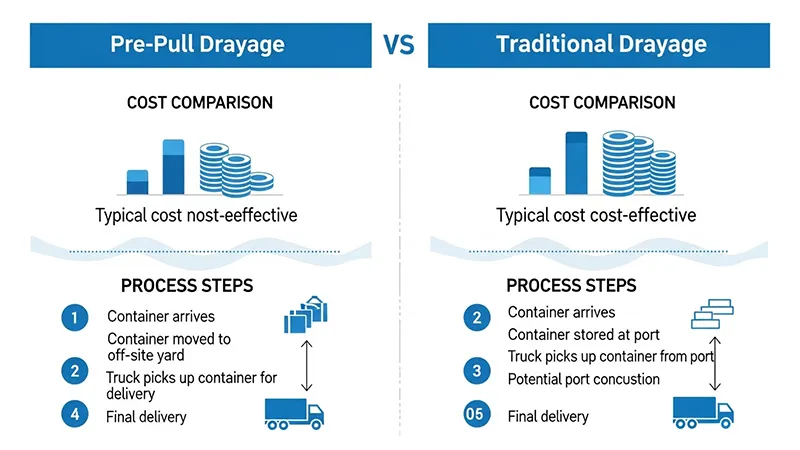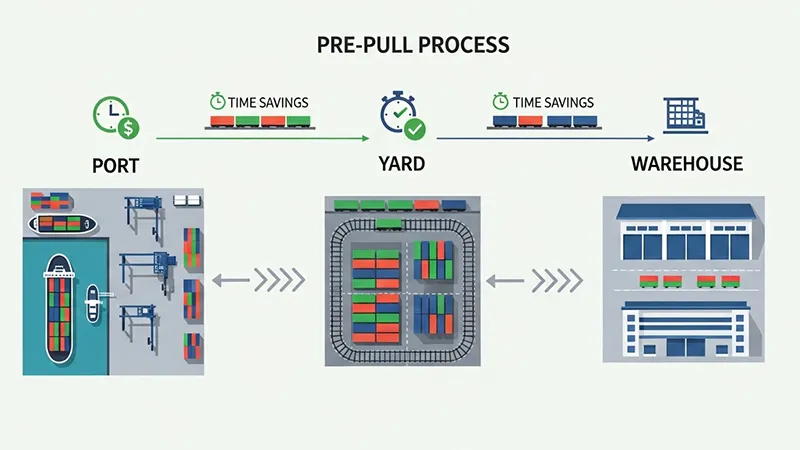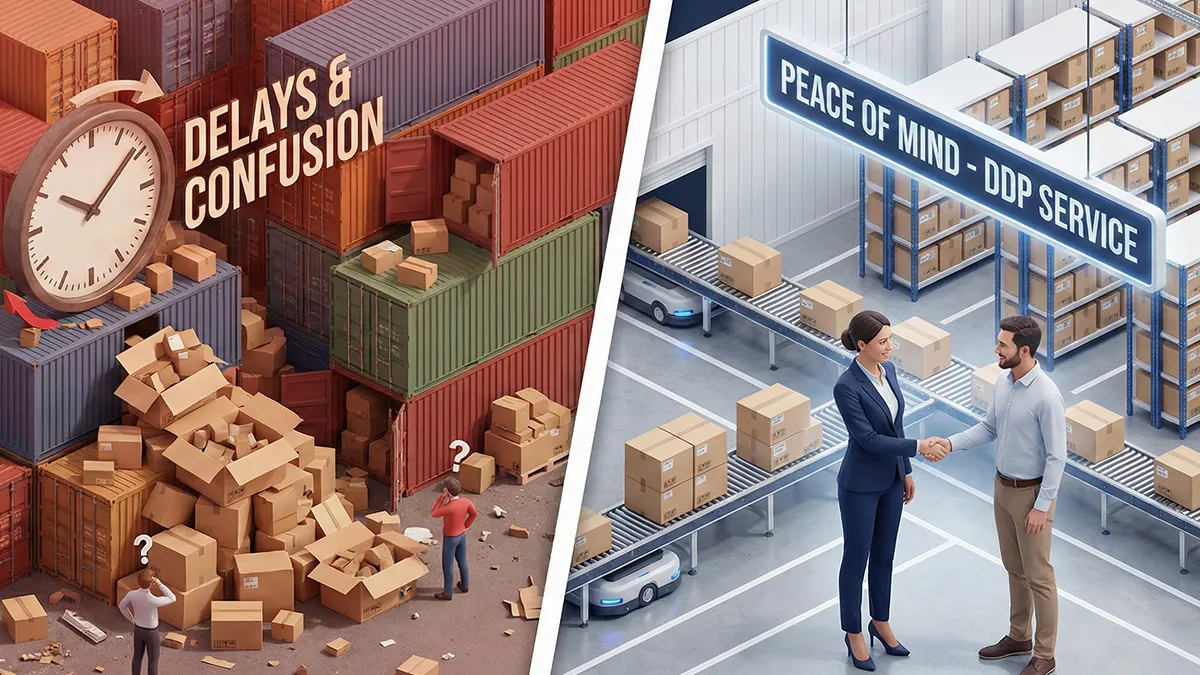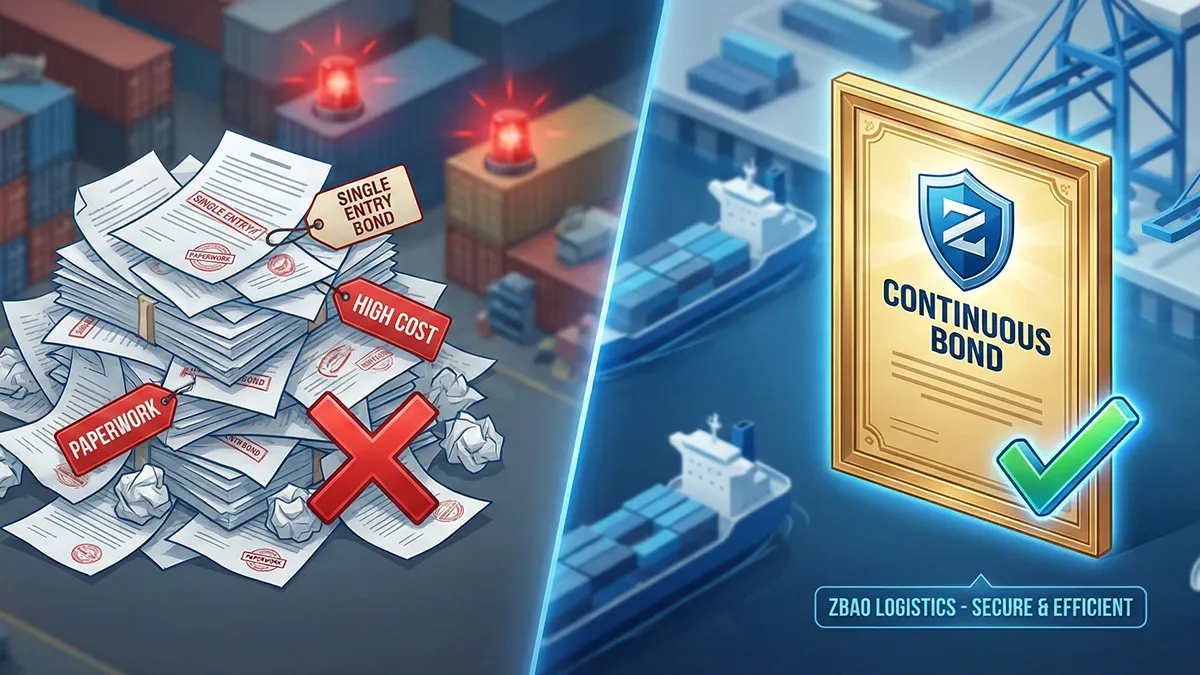What Is Pre-Pull Trucking? Meaning, Process, and Why It Matters
What Is Pre-Pull Trucking?
Pre-pull trucking refers to a situation where a container is picked up early from a port or terminal and temporarily stored at a trucker’s yard before being delivered to the consignee.
It’s a proactive move used to avoid demurrage charges, handle warehouse appointment delays, or manage port congestion.
While it involves a small storage fee, pre-pulling often saves importers hundreds of dollars and keeps the supply chain flowing smoothly.
Understanding the Concept of Pre-Pull Trucking
In the container drayage industry, pre-pull means moving the container out of the terminal before the “Last Free Day” (LFD) to prevent extra storage costs.
Instead of leaving the container inside the port, the trucker collects it and holds it at a private yard or warehouse until the delivery window opens.
This flexibility allows forwarders and importers to coordinate customs clearance, FBA appointments, or warehouse availability without risking demurrage penalties.
As part of a complete logistics strategy, pre-pull trucking provides both cost control and operational predictability.
According to the Intermodal Association of North America (IANA), pre-pull moves are one of the most effective methods for preventing port congestion and reducing demurrage exposure.
Why Pre-Pull Trucking Happens
Several factors can trigger a pre-pull order:
-
Port Congestion: Terminals like Los Angeles and New York often face delays. Pre-pulling ensures cargo moves before queues build up.
-
Limited Free Time: Shipping lines grant only 4–5 days of free time. Early pickup prevents costly storage beyond that window.
-
Warehouse Scheduling: FBA centers or consignee warehouses may not have space or an available appointment.
-
Trucker Optimization: Pulling containers early helps carriers balance workloads and avoid missed delivery slots.
In some cases, pre-pull is used alongside other strategies like chassis split management — another key drayage concept that occurs when the chassis and container are located at different depots.
Both pre-pull and chassis split are solutions designed to keep containers moving efficiently during port congestion.
Pre-Pull vs Traditional Drayage

| Aspect | Traditional Drayage | Pre-Pull Drayage |
|---|---|---|
| Pickup Timing | On delivery date | Early pickup before LFD |
| Storage | Direct delivery | Stored at yard or warehouse |
| Purpose | Standard port pickup | Avoid demurrage / manage timing |
| Cost | Base drayage rate | Base + pre-pull fee |
| Flexibility | Limited | High |
Key takeaway: traditional drayage reacts to deadlines — pre-pull anticipates them.
Pre-Pull Fees Explained
A pre-pull fee compensates the trucker for early movement and temporary storage.
It typically includes:
-
Additional driver and chassis time
-
Yard handling and monitoring
-
Short-term storage (usually 1–3 days)
-
Coordination and scheduling
Typical rates:
| Port | Average Pre-Pull Fee (USD) | Storage Period |
|---|---|---|
| Los Angeles / Long Beach | $90–150 | 1–3 days |
| New York / New Jersey | $75–120 | 1–2 days |
| Houston / Savannah | $75–100 | 1–3 days |
By comparison, demurrage fees can exceed $250 per day per container — so pre-pulling is usually the cheaper option.
How the Container Pre-Pull Process Works

-
Arrival: The vessel arrives, and the container becomes available for pickup.
-
Decision: The importer or forwarder determines whether immediate delivery is possible.
-
Coordination: The trucker picks up the container early and moves it to their yard.
-
Storage: The container remains at the yard until the consignee or warehouse is ready.
-
Final Delivery: Once the appointment opens, the container is delivered promptly.
At Zbao Logistics, we automate this process through our integrated FCL system.
If we detect limited free time or an FBA delay, our team pre-pulls automatically — protecting your cargo and preventing unexpected penalties.
Benefits of Pre-Pull Trucking
1️⃣ Cost Savings
Avoiding demurrage can save hundreds or even thousands per shipment.
A single day’s delay at major U.S. ports often costs $250–400 — far exceeding a $100 pre-pull fee.
2️⃣ Scheduling Flexibility
Coordinate customs clearance, warehouse delivery, and trucking routes without time pressure.
3️⃣ Inventory Control
Keep goods closer to your warehouse for quick dispatch once ready.
4️⃣ Improved Truck Efficiency
Pre-pulling reduces idle driver time and streamlines turnaround at congested terminals.
5️⃣ Supply Chain Resilience
Especially during peak season or port disruptions, pre-pull moves keep containers flowing and prevent ripple delays.
How Pre-Pull Helps Avoid Demurrage Fees
Demurrage is charged when a loaded container sits too long at the port terminal.
By pre-pulling containers to a nearby yard before the free time expires, importers can stop the demurrage clock.
In many cases, Zbao Logistics clients save $500–$1,200 per shipment through pre-pull programs, especially for FBA deliveries delayed by appointment systems or customs exams.
Pre-Pull Trucking in Full Container Load (FCL) Shipping
For FCL shipments — where one shipper owns the entire container — timing is critical.
Pre-pull trucking ensures:
-
Cargo leaves port on time
-
Chassis and truck are efficiently used
-
Containers are ready exactly when the receiving warehouse is available
This approach keeps high-value cargo (electronics, consumer goods, etc.) moving and avoids costly idle time.
Role of Freight Forwarders in Pre-Pull Operations
A freight forwarder coordinates all steps of a pre-pull move:
-
Monitoring vessel arrival and port availability
-
Deciding whether a pre-pull is needed
-
Scheduling truckers and chassis
-
Managing off-dock storage
-
Handling customs and final delivery
At Zbao Logistics, we integrate these steps into one platform, ensuring containers are moved at the right time — without surprise costs.
Limitations and Risks
While pre-pulling prevents demurrage, detention fees may still occur if the empty container is not returned promptly after unloading.
Therefore, it’s essential to coordinate delivery and return schedules precisely with your logistics provider.
Conclusion: Pre-Pull Trucking Is a Smart, Preventive Strategy
Pre-pull trucking isn’t just about avoiding fees — it’s about control, timing, and peace of mind.
By moving containers early, importers gain flexibility, truckers save time, and warehouses operate on schedule.
At Zbao Logistics, we combine real-time tracking, port monitoring, and yard coordination to execute pre-pulls automatically when needed.
Whether you’re shipping to Los Angeles, New York, or Houston, our team ensures your cargo stays ahead of the clock.
👉 Request a Quote about adding pre-pull services to your next shipment.
FAQ: Pre-Pull Trucking and Drayage
1. What does pre-pull mean in drayage?
It means the trucker picks up a container early from the port and stores it at a yard to avoid demurrage.
2. How much does a pre-pull cost?
Typically $75–150 per container, depending on port and storage time.
3. Who pays for pre-pull fees?
Usually the importer or consignee, unless otherwise arranged with the forwarder.
4. Does pre-pull eliminate detention fees?
No — detention may still apply if the empty container isn’t returned on time.
5. Is pre-pull common for Amazon FBA shipments?
Yes. FBA warehouses often require appointments, so pre-pulling prevents missed slots and extra charges.


